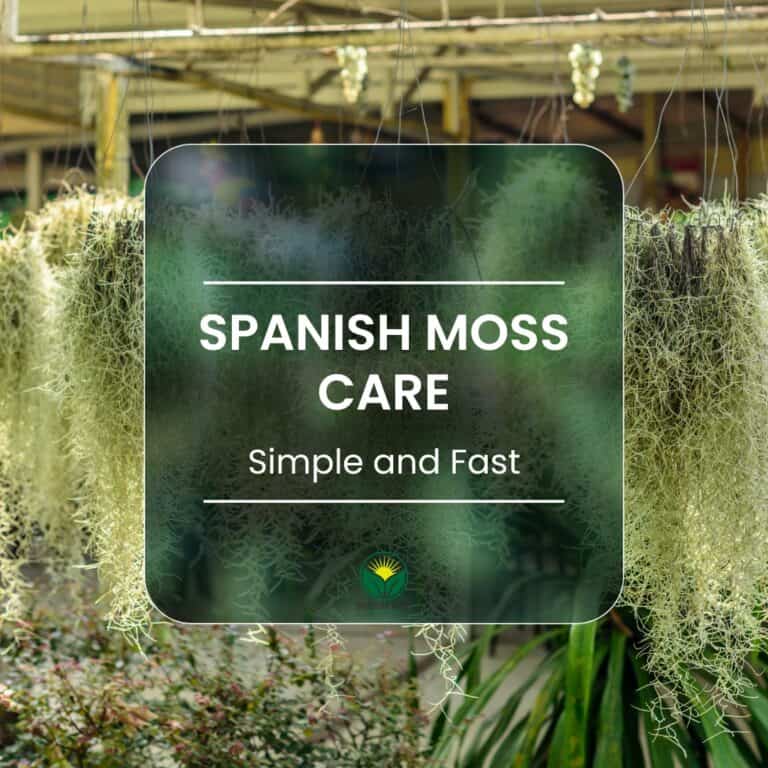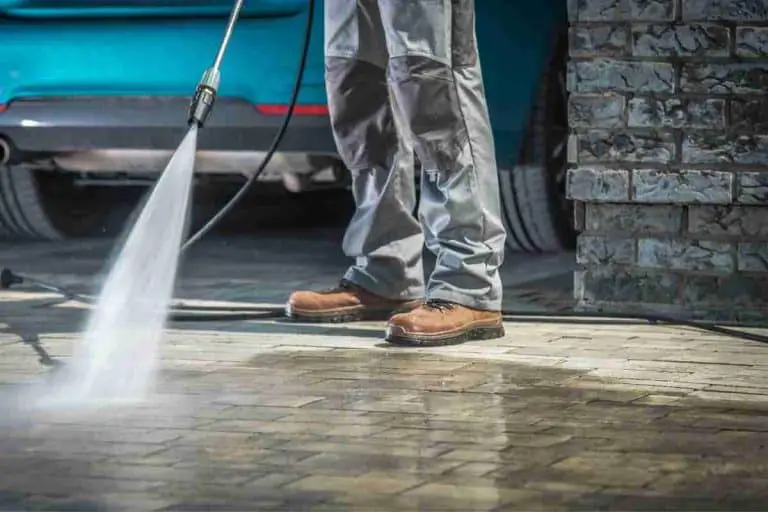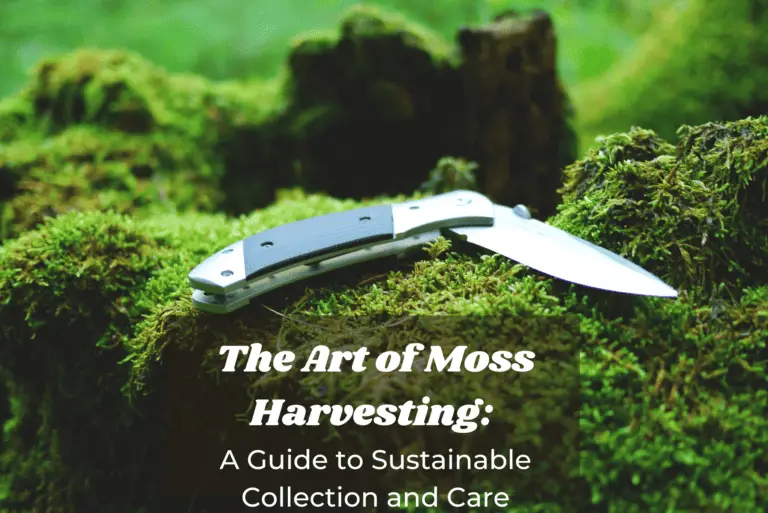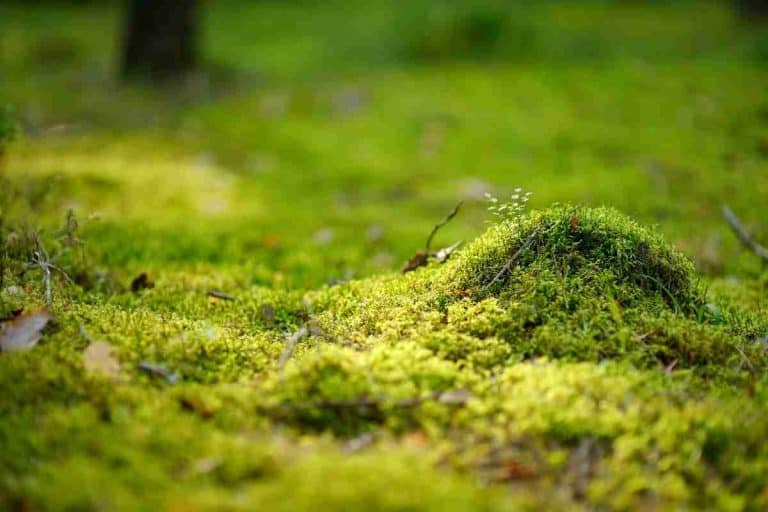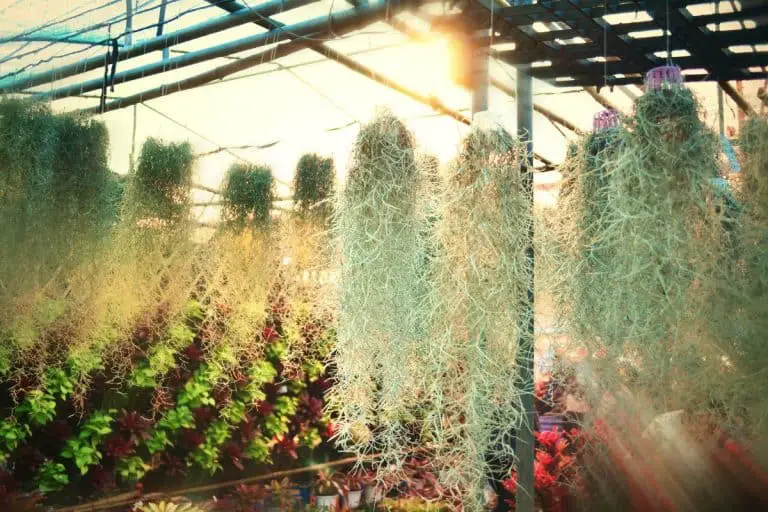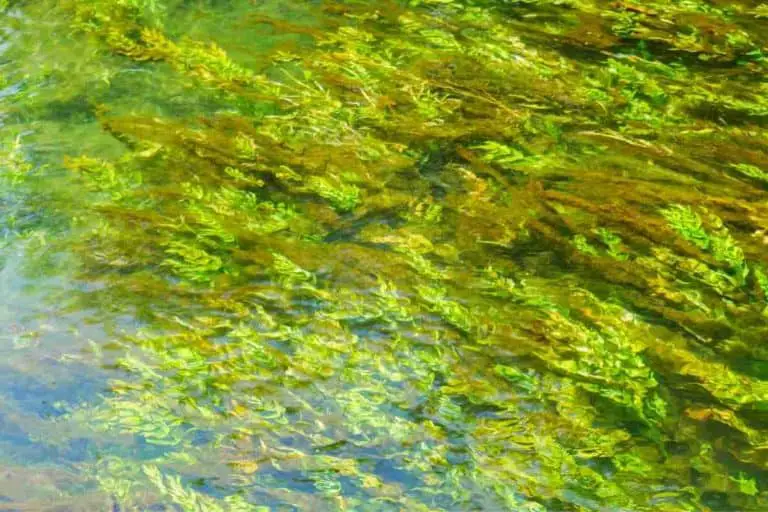Is Moss Good For Plants? (Indoor & Outdoor Plants)
You may have seen moss used as a ground cover in gardens or as decoration in terrariums, but you may not have considered using it on your potted plants. While it is true that moss is not a necessary part of plant growth, it can actually be beneficial for plants or potted plants in several ways.
One of the primary benefits of moss is that it helps hold moisture in the soil. This is especially beneficial for potted plants because they can dry out more quickly than plants in the ground.
By adding a layer of moss to the top of your potting mix, you can help keep the soil moist for longer.
However, the biggest problem is knowing what types of moss are actually good for plants. So, in this article, we will be discussing the different types of moss and also explain in more detail why moss is good for plants.
Why Moss Is Good For Your Plants?
For years, moss has been unfairly maligned as being nothing more than an unwanted nuisance. recently, however, people are beginning to see the unique value that this plant has to offer, especially when it comes to potted plants.
But, what is it about moss that makes it so beneficial?
- Keeps Potted Plants Moist: As we briefly mentioned before, one of the main reasons why moss is good for plants is that it helps to hold moisture in the soil. Moss is able to do this because it has a sponge-like structure that soaks up water and then slowly releases it back into the soil.
- Provides Nutrients For Plants: Moss is also a great source of nutrients for plants. This is because mosses are able to release minerals that it absorbs from rainwater and sunlight. These minerals include nitrogen, phosphorus, and potassium, which are all essential for plant growth.
- Moss Acts As Insulation: Another benefit of moss is that it can help insulate your plant’s roots from extreme temperature changes. This is again due to its moisture-holding ability, because moss can hold water, it can help protect roots from both heat and cold damage.
- Helps Control Soil Erosion: Moss also helps to control soil erosion. In fact, there was a study, conducted under the EU RECARE1 project, and they found that moss actually helps prevent soil erosion. This is great if you live in an area with heavy rainfall.
- Improves The Health Of The Plants: Because of all the benefits that moss provides, it’s no surprise that plants that are grown in moss are generally healthier than those that are not. Moss also helps reduce and prevent diseases that plants are susceptible to.
- Moss Adds Beauty: In addition to its practical benefits, moss also adds beauty to potted plants. Moss also has a soft, velvety texture that makes it a pleasing addition to any plant pot. If you are looking for a way to add a little extra interest to your potted plants, consider adding some Moss!
You May Also Like To Read:
5 Types Of Moss That Are Good For Plants
Moss can be a great choice for helping your plants grow, as long as you know what kind of moss to get. The types of moss you should avoid are those that contain toxins and irritants.
They are ones such as Bryum (Brachythecium Roseum), Sphagnum (Sphagnum spp.), and Polytrichum (Polytrichum commune).
One kind of Moss good for plants is called spikemoss. It has a loose texture that makes it ideal for containers. It spreads out in all directions from its growing point and can also grow in full.
In addition, to spikemoss others include Spanish Moss, Sheet Moss, Reindeer Moss, and Peat Moss.
1. Spikemoss
Spikemoss makes for a great contrast with plants that have finer textures and is especially good when it’s used to separate different flower varieties.
You can grow spikemoss in water as long as the plant gets nutrients from the soil or other source at least every two weeks.
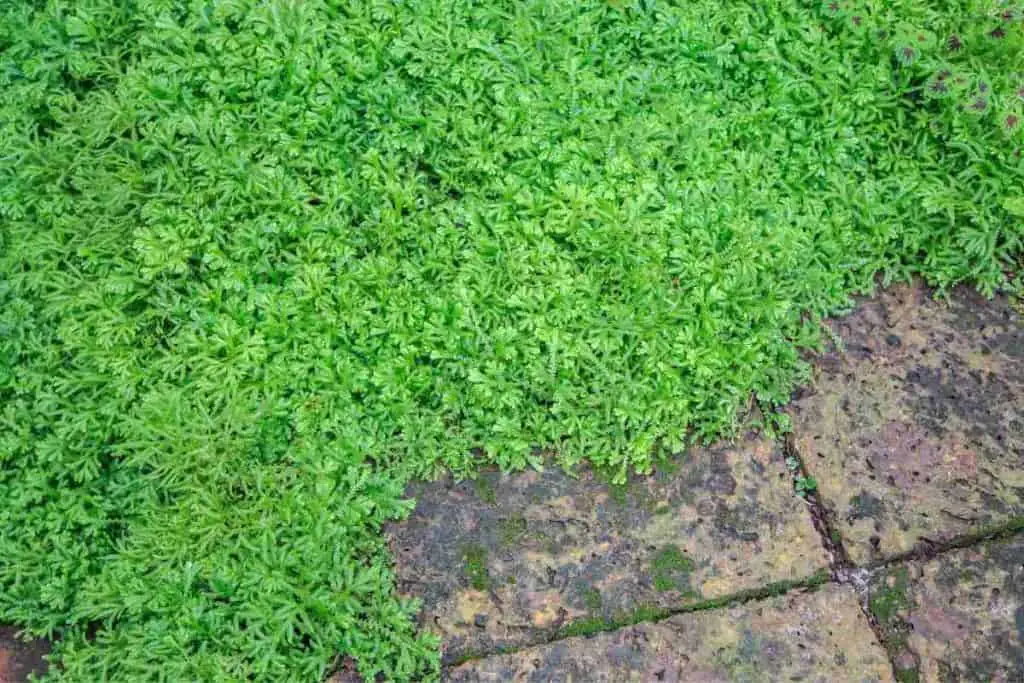
Why Spikemoss Is Good For Plants?
- Since spikemoss is so pliable, you can cut and transplant it or attach hanging basket plants onto the moss’ branches so that they look as though they’re growing over a vine.
- This type of moss uses photosynthesis to get nutrients from the sun, so you don’t have to worry about adding too many extra nutrients for your plant – all it needs is sunlight and water!
2. Spanish Moss
Also known as Tillandsia, Spanish Moss has a light texture that creates a nice contrast with plants such as hostas or ferns.
The moss can be invasive if you don’t trim it back, but despite this minor drawback, most gardeners enjoy having it around because of its soft and airy look. It also helps keep bugs away from nearby plantings!

Why Spanish Moss Is Good For Plants?
- This Moss can help plants by attracting nutrients. Some gardeners even use the Spanish Moss to create a natural mulch in their gardens.
- If this is something you want to try, make sure that the moss gets plenty of water so it doesn’t dry out and die.
3. Reindeer Moss
Reindeer Moss (Cetraria Islandica) is an evergreen that grows up to ten inches tall but packs a punch with its vibrant color and “fur-like” texture.
Since it only needs sunlight to grow, it makes a good ground cover if you’re working with limited space or aren’t sure what type of plants will thrive.
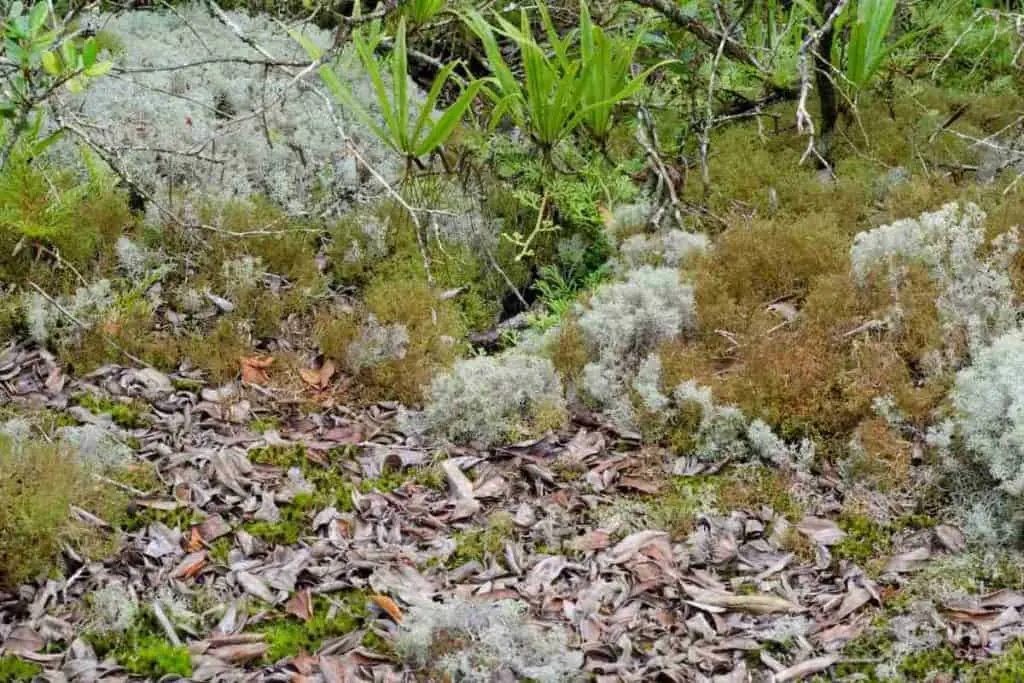
Why Reindeer Moss Is Good For Plants?
- This type of moss makes an ideal substrate for small potted plants, especially if you want to add a splash of color for the holidays.
- You can also use it as a “blanket” under larger plants because it keeps the soil underneath from drying out too quickly.
4. Sheet Moss
Sheet Moss (Atrichum Undulatum) is similar to spikemoss in its growth pattern and appearance. Its color is usually olive-green and looks very natural when it grows among other plants.
In fact, some people have used Sheet Moss to wrap the trunks of trees.
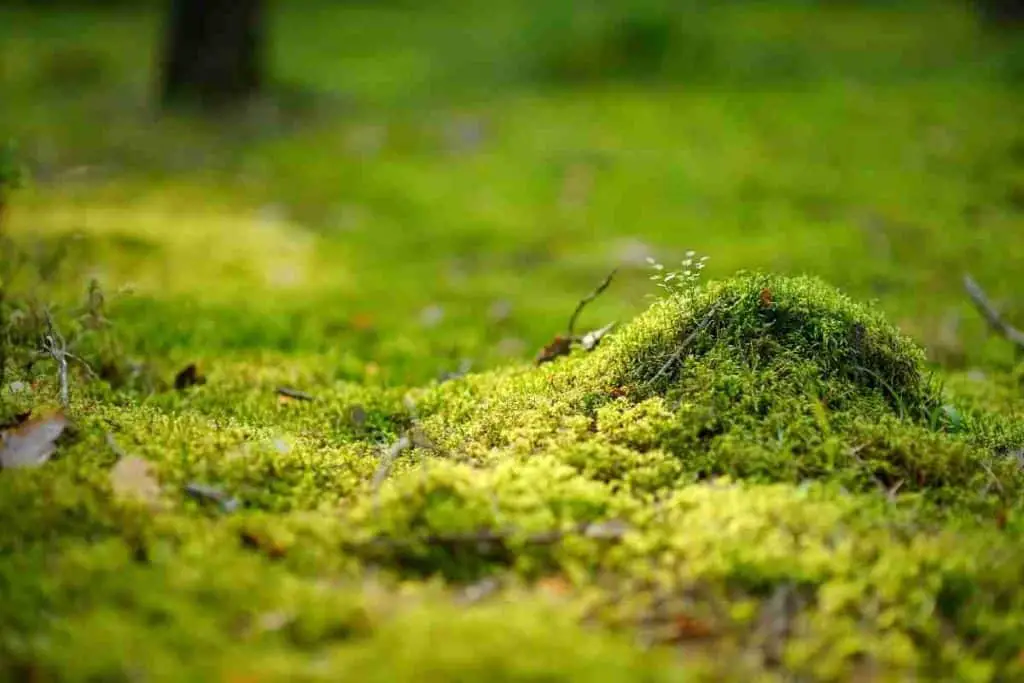
Why Sheet Moss Is Good For Plants?
- You can use this type of moss as a good cover for logs, rocks, and aquarium decorations.
- It’s also great when you want to plant flowers in the garden because it helps keep bugs away from most plants while providing that decorative texture you may be looking for in your landscape.
5. Peat Moss
Peat moss is made up of partly decayed plant material that has been dried and processed. It can be used to improve the soil’s texture and drainage. Peat moss also contains nutrients that help plants grow healthy and strong.
Peat moss is also used to suppress weed growth in gardens because its acidic nature makes weeds difficult to grow. If you need some extra mulch, peat moss can be shredded and layered on top of your flower beds!
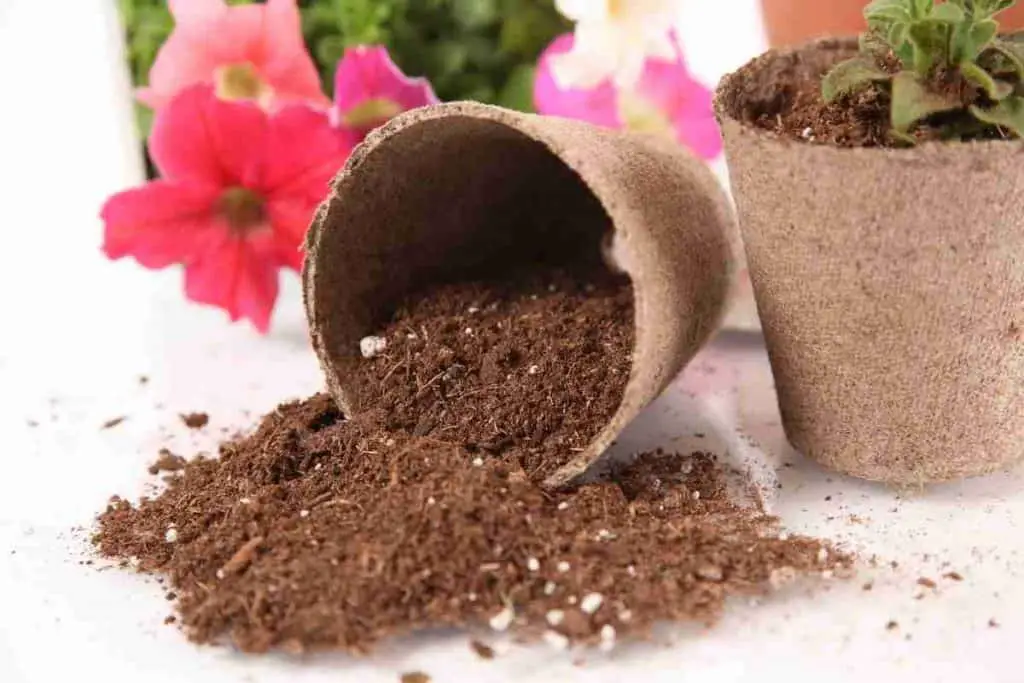
Why Peat Moss Is Good For Plants?
- You can use Peat Moss for nearly anything you’d use regular peat for. Some gardeners sprinkle this material around the base of trees and shrubs so they will stay healthy.
- It’s recommended that you dig a shallow hole first so the roots can get access to some extra moisture if needed.
These are just some of the different types of Moss that are good for plants and what’s great about this is you can also find this type of moss in the ground naturally or if you prefer purchase it from your local gardening store.
You may want to try growing it indoors because you won’t have to do much maintenance and can control exactly what goes into your garden’s soil.
It’s important to note that most moss is very easy to grow, so even beginners should be able to get great results when trying out these different versions.
Having one of these types of moss around makes your garden more beautiful while helping shade-loving plants thrive! Still, if you want more information about this article should help: How to preserve moss? (for gardens & Indoors)
Outdoor Plants
You can use moss to decorate your potted plants by placing it around the pot and on top of the soil. This type of moss can absorb some water from the pot, so you may want to make sure that you keep it well-watered if you’re using this method.
The moss also will help keep bugs away from your outdoor pots as long as there are no openings where they can get in! At the same time, it can keep the soil in your pots from drying out too quickly so your plants stay healthy
So where do you place the moss in a potted plant? Well, you have two options one is around the plant pot’s rim or you could place it directly on top of the soil, after all, you don’t want to cover your flower s right?
Indoor Plants
Moss is a type of plant that is not commonly used indoors because it prefers shady and moist conditions. However, moss can be introduced to your indoor plants if you have the right environment for them.
Here are some tips on how to use moss with your indoor plants:
- When deciding where to put moss in relation to your plants, make sure they will get at least four hours of sunlight each day, or else the moss won’t grow well.
- Moss should be kept away from heat sources like radiators and fireplaces as this will dry out the soil fast.
- If you are going on vacation for an extended period of time, you may want to place a humidifier near your plant so that moisture doesn’t
Like outdoor plants, moss is good for indoor plants because live indoor plants are kept and grown in the same way potted plants are which means you can use the same methods you would use on your outdoor potted plants.
Placing It Over Soil
If you want to use your moss as a ground cover, then it’s very easy to do so. All you have to do is place it over the soil around your plants and be sure that it gets enough sunlight during the day so that it will continue to grow.
If you choose to try this method for your garden, be sure not to let any leaves or other debris fall onto them because they won’t survive too long if they are covered up!
Related Article
Mixing It With Plant Soil
Mixing moss with plant soil can be an effective way to grow new plants. The roots of the plant will grow into the moss and then out into the potting soil, creating a stronger root system.
If you are just starting out as a gardener or if your plants have been struggling, this is a good technique for achieving better results.
Here’s how to do it:
- Cut off pieces of dried moss that are about two inches long
- Add some water and let it soak up for five minutes
- Fill a container with potting soil
- Place one piece of moss on top
- Plant your desired seedling
- Repeat until all containers are full
Conclusion
Moss is a really great option because it can be used for nearly anything that you’d typically use peat for. Just remember to water them regularly and make sure they have access to plenty of sunlight during the day if you’re using this method.
If your moss has grown in well-drained soil, then you won’t need to worry about it being taken out by grass as much when you seed!
Whether or not your plants are indoors or outdoors, moss makes a wonderful addition to any garden planter and will help keep pests away!

